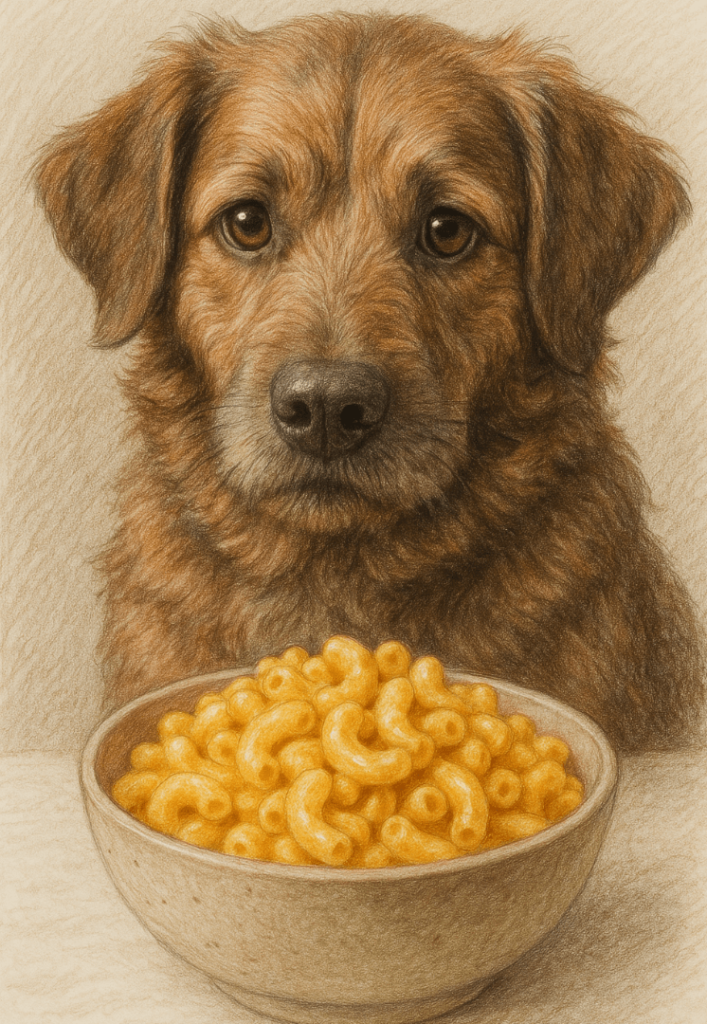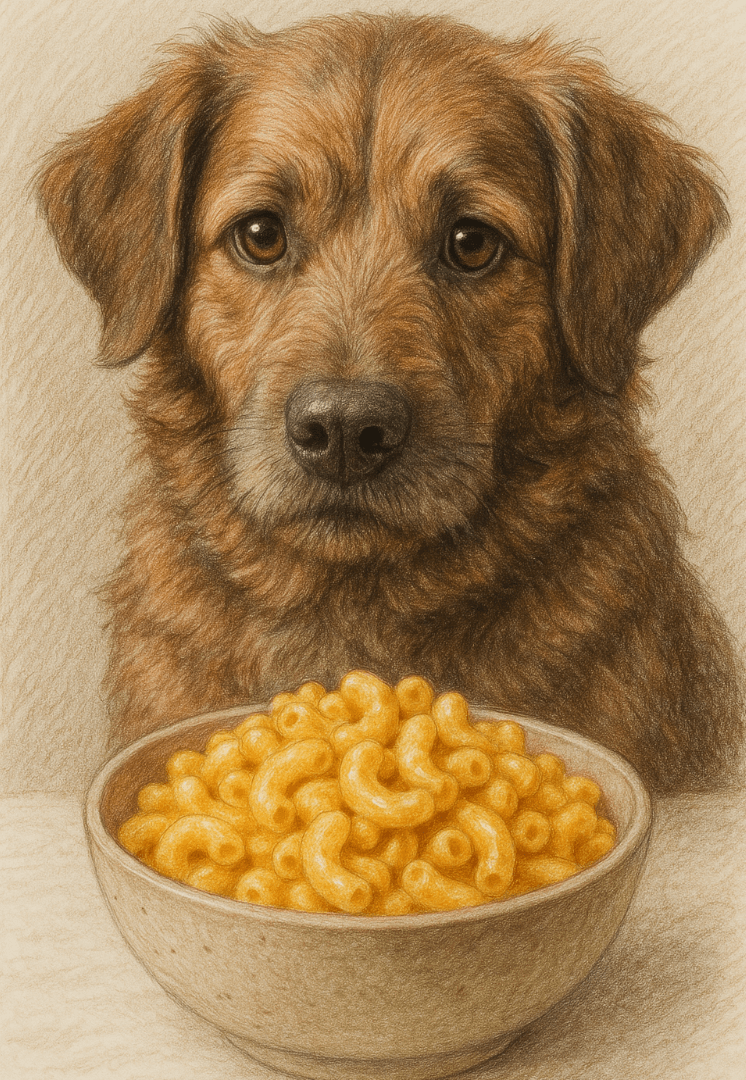Can Dogs Have Mac and Cheese?
Mac and cheese is a beloved comfort food for humans, but can our furry friends enjoy it too? Many dog owners wonder if this cheesy, carb-loaded dish is safe to share with their pets. While dogs can eat some human foods in moderation, others may pose risks due to ingredients that aren’t compatible with their digestive systems. In this blog post, we’ll explore whether mac and cheese is safe for dogs, what ingredients to watch out for, and how to prepare a dog-friendly version if you decide to treat your pup. Understanding these details will help you make informed decisions about sharing your favorite meals with your canine companion.
Potential Risks of Feeding Mac and Cheese to Dogs
While mac and cheese might seem harmless, certain ingredients commonly found in this dish can be problematic for dogs. Being aware of these risks ensures your pet’s safety.
High Fat Content:
Cheese and butter are high in fat, which can upset your dog’s stomach or lead to pancreatitis if consumed in large amounts.Lactose Intolerance:
Many dogs are lactose intolerant and may experience diarrhea, gas, or vomiting after consuming dairy products like cheese.Salt Overload:
Excessive salt in mac and cheese can cause dehydration, sodium ion poisoning, or kidney strain in dogs.Seasonings and Spices:
Ingredients like garlic or onion powder, often used in recipes, are toxic to dogs and should be avoided entirely.Carb Overload:
Pasta is high in carbohydrates, which can contribute to weight gain or obesity if fed regularly.
These risks highlight why caution is essential when considering sharing mac and cheese with your dog. Always prioritize their health over indulgence.
How to Prepare Dog-Friendly Mac and Cheese
If you’re determined to let your dog enjoy a cheesy pasta treat, there are ways to make it safer and healthier for them. Follow these guidelines to create a dog-friendly version of mac and cheese.
Use Low-Fat Cheese:
Opt for low-fat or lactose-free cheese to minimize digestive issues and reduce fat content.Skip the Butter:
Avoid adding butter or heavy cream, as these increase the fat and calorie count unnecessarily.Choose Whole Grain Pasta:
Whole grain or gluten-free pasta provides more nutritional value compared to refined options.Limit Seasonings:
Stick to plain, unseasoned ingredients without garlic, onion, or excessive salt to keep it safe for your dog.Add Healthy Mix-Ins:
Incorporate dog-safe vegetables like steamed carrots or green beans for added nutrients and flavor.
By making these adjustments, you can create a delicious yet safe treat that your dog will love without compromising their health.
Check this guide 👉Can Dogs Eat Pork Liver? Best 7 Expert Tips!
Check this guide 👉Can Dogs Eat Sorbitol? Best 7 Expert Tips!
Check this guide 👉Can Dogs Eat Spring Mix? Best 7 Expert Tips!

Safe Ingredients for Dog-Friendly Mac and Cheese | Ingredients to Avoid in Mac and Cheese for Dogs |
|---|---|
Plain, low-fat cheese | Full-fat or processed cheeses |
Unsalted, whole grain pasta | Salted or flavored pasta |
Steamed vegetables (e.g., carrots, peas) | Garlic or onion powder |
Lean protein (e.g., shredded chicken) | Butter or heavy cream |
Fresh herbs like parsley | Artificial flavorings or preservatives |
Signs Your Dog May Be Sensitive to Mac and Cheese
Even with precautions, some dogs may still react negatively to mac and cheese. Watch for these signs to determine if they’re sensitive to any ingredients.
Upset Stomach:
Symptoms like vomiting or diarrhea indicate that your dog’s digestive system couldn’t handle the food.Excessive Gas:
Frequent flatulence suggests difficulty digesting dairy or other components of the dish.Lethargy or Weakness:
These could signal an adverse reaction to high sodium levels or toxic ingredients.Itching or Skin Irritation:
Allergic reactions to dairy or spices may manifest as itching, redness, or rashes.Increased Thirst or Urination:
High sodium intake can cause dehydration, leading to excessive thirst and urination.
Recognizing these signs early allows you to address potential issues promptly and consult your vet if needed.
Healthier Alternatives to Mac and Cheese for Dogs
If mac and cheese seems too risky or unhealthy, there are plenty of nutritious alternatives that satisfy your dog’s cravings for something tasty and comforting.
Plain Cooked Pasta with Lean Protein:
Serve plain pasta topped with shredded chicken or turkey for a filling and wholesome meal.Cheese-Free Veggie Bowls:
Mix cooked vegetables like sweet potatoes, carrots, and peas for a nutrient-packed option.Homemade Dog Treats:
Bake homemade treats using dog-safe ingredients like peanut butter, oats, and pumpkin.Frozen Yogurt Pops:
Offer lactose-free frozen yogurt mixed with fruits like blueberries for a refreshing snack.Grain-Free Options:
Use grain-free pasta or mashed cauliflower as a base for a lighter alternative.
These alternatives provide variety and nutrition without exposing your dog to unnecessary risks.
Common Mistakes to Avoid When Feeding Mac and Cheese to Dogs
Feeding your dog mac and cheese requires attention to detail to avoid mistakes that could harm their health. Here are some pitfalls to steer clear of.
Using Processed Cheese Products:
Processed cheese contains additives and preservatives that are difficult for dogs to digest.Adding Too Much Salt:
Even a small amount of extra salt can overwhelm your dog’s system, so stick to unsalted options.Ignoring Portion Sizes:
Feeding large portions can lead to weight gain or digestive distress; always serve in moderation.Forgetting About Allergies:
Some dogs have sensitivities to specific ingredients, so monitor their reaction closely.Making It a Regular Treat:
Occasional indulgence is fine, but frequent feeding can disrupt your dog’s balanced diet.
Avoiding these mistakes ensures your dog enjoys mac and cheese safely and responsibly.
Benefits of Homemade Dog Meals Over Store-Bought Options
Preparing homemade meals, including dog-friendly versions of mac and cheese, offers several advantages over store-bought alternatives.
Control Over Ingredients:
You decide exactly what goes into your dog’s food, avoiding artificial additives or fillers.Customization for Dietary Needs:
Tailor meals to suit your dog’s allergies, sensitivities, or nutritional requirements.Cost-Effectiveness:
Homemade meals can be more affordable than premium commercial dog foods.Enhanced Flavor Variety:
Experiment with different combinations to keep your dog excited about mealtime.Bonding Experience:
Preparing food for your dog strengthens your connection and shows them love through effort.
Homemade meals allow you to take charge of your dog’s nutrition while fostering creativity and care.
Fun Ways to Incorporate Veggies into Your Dog’s Diet
Vegetables are a great way to add nutrients to your dog’s meals, including dog-friendly versions of mac and cheese. Here are creative ideas to make veggies appealing.
Mix Them Into Pasta Dishes:
Finely chop or puree vegetables like spinach or zucchini and blend them into pasta for added nutrition.Create Veggie-Based Broths:
Simmer vegetables in water to create a flavorful broth that enhances the taste of plain dishes.Freeze Them as Treats:
Blend veggies with water or broth, pour into molds, and freeze for a refreshing summer snack.Stuff Them Into Toys:
Use hollow toys or Kongs to stuff mashed veggies for a fun and interactive treat.Bake Veggie Chips:
Thinly slice vegetables like sweet potatoes or carrots, bake until crispy, and serve as crunchy snacks.
Incorporating veggies creatively ensures your dog enjoys a balanced and varied diet.
Frequently Asked Questions About Dogs and Mac and Cheese
Is mac and cheese toxic to dogs?
Not necessarily toxic, but certain ingredients like garlic or excessive salt can be harmful.
Can I give my dog a small bite of mac and cheese?
A tiny, plain bite without seasoning is unlikely to harm most dogs, but it’s best avoided regularly.
What should I do if my dog eats mac and cheese?
Monitor for symptoms like vomiting or diarrhea; contact your vet if adverse reactions occur.
Are all cheeses safe for dogs?
Soft, low-fat cheeses like mozzarella are safer than sharp or processed varieties.
How can I tell if my dog is lactose intolerant?
Signs include diarrhea, gas, or vomiting after consuming dairy products.
Prioritizing Your Dog’s Health When Sharing Human Food
While mac and cheese is a delightful treat for humans, it’s not the best choice for dogs due to its high fat, sodium, and dairy content. However, with careful preparation and ingredient selection, you can create a dog-friendly version that minimizes risks. Alternatively, opting for healthier snacks ensures your dog stays happy and healthy without compromising their well-being. Remember, moderation and mindfulness are key when sharing human food with your furry friend. By prioritizing their dietary needs, you’ll continue to nurture a strong bond built on trust and care.
Cat Fever Treatment: Best 7 Expert Tips! Discover expert advice on identifying, managing, and treating fever in cats to ensure their quick recovery and well-being.
Understanding Meloxicam for Cats: Best 7 Expert Tips! Learn how to safely administer meloxicam, manage side effects, and ensure your cat's comfort with expert advice on feline pain relief.
Amoxicillin for Cat UTI: Best 7 Expert Tips! Discover safe usage, dosage guidelines, and expert advice on treating feline urinary tract infections effectively with amoxicillin.
Understanding Cat Cancer Treatment: Best 7 Expert Tips! Discover expert advice on managing feline cancer, from early detection to treatment options, ensuring your cat’s health and comfort.





